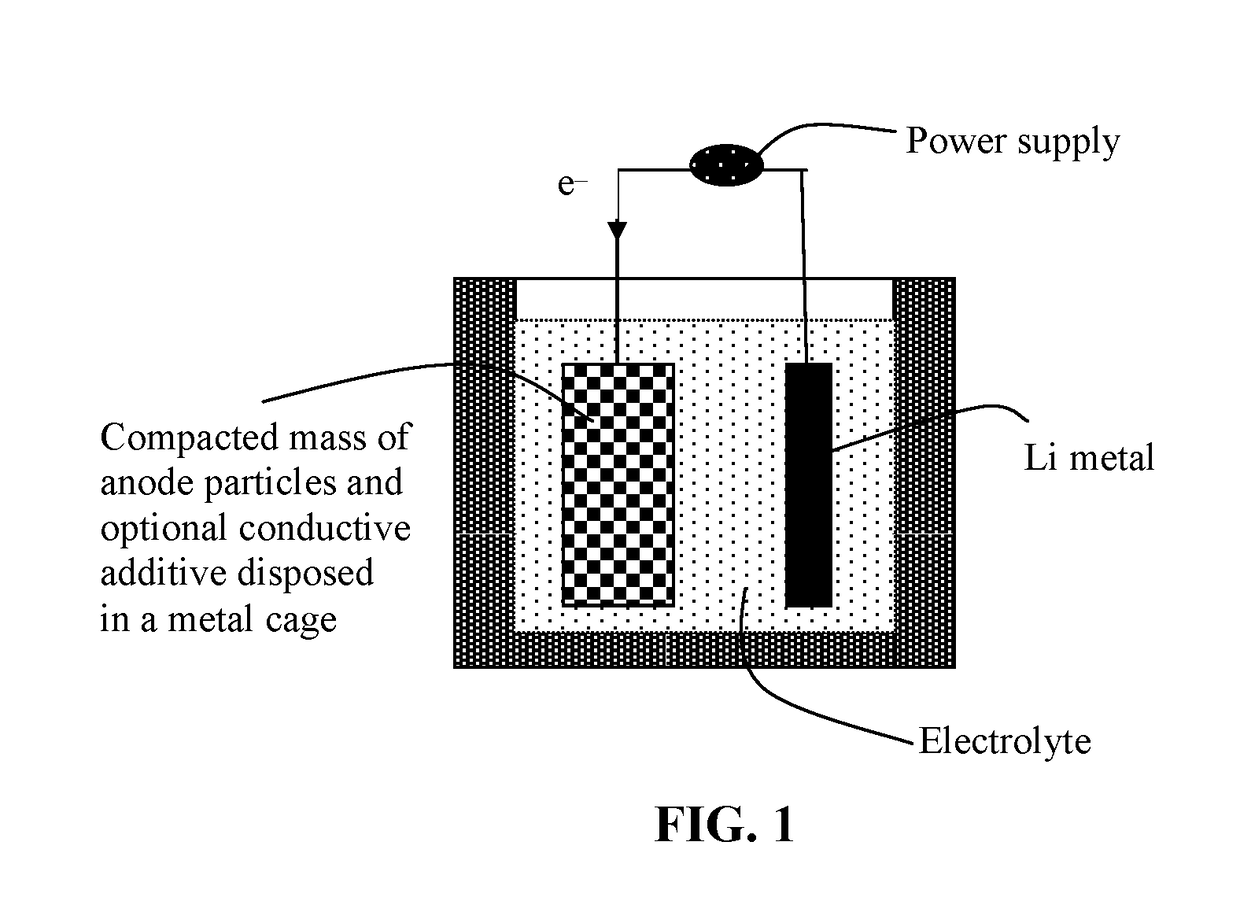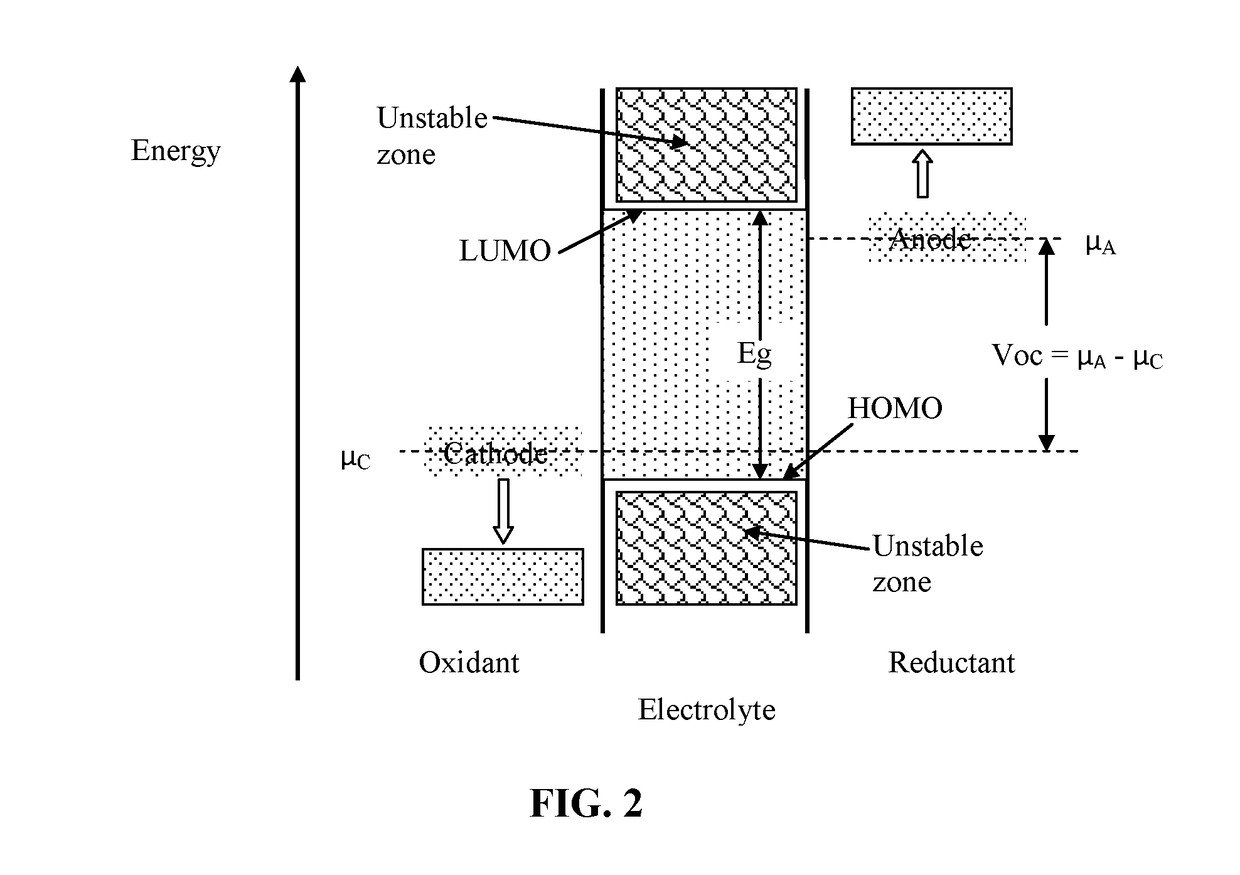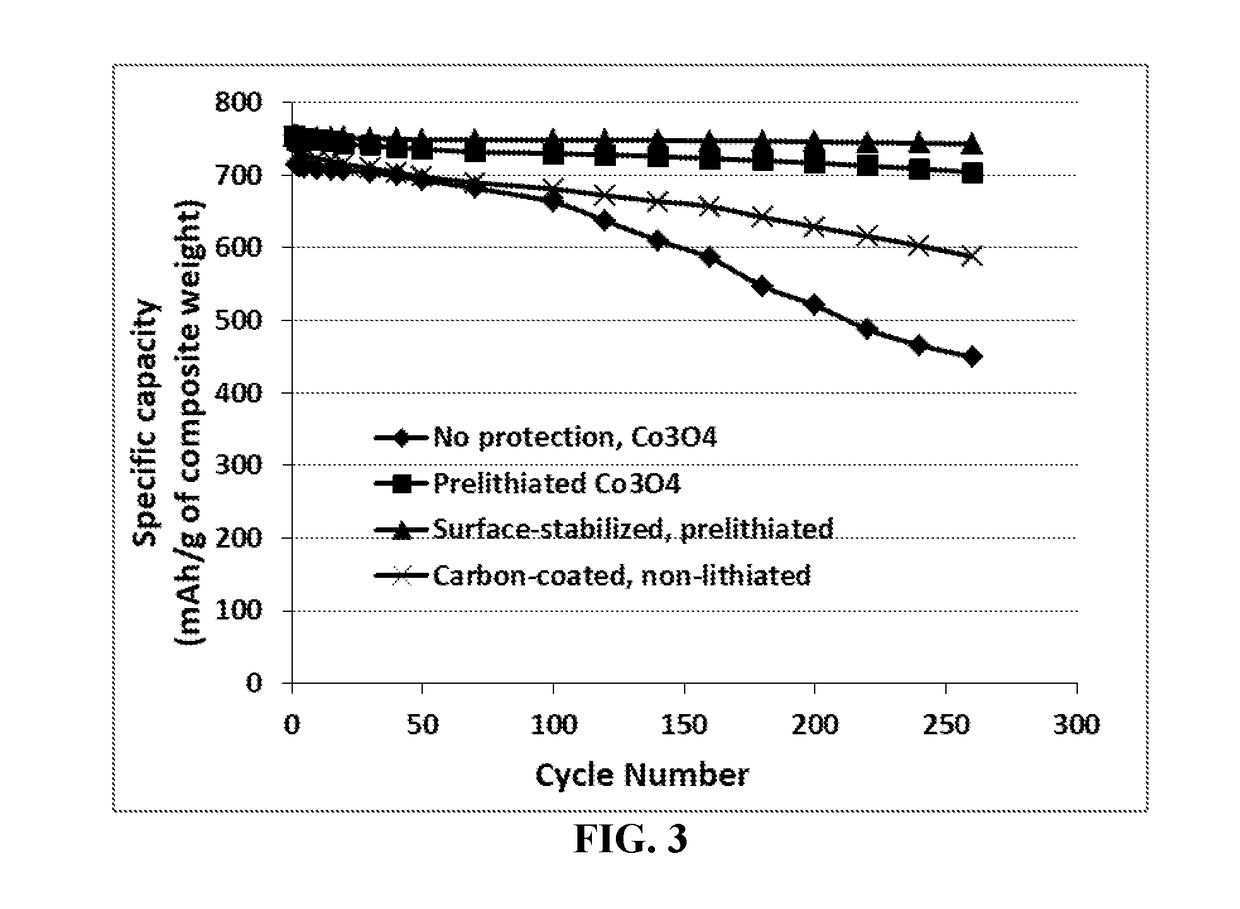Surface-stabilized and prelithiated anode active materials for lithium batteries and production method
a lithium battery and active material technology, applied in the field of surface stabilization and prelithiation of anode active materials for lithium batteries, can solve the problems of loss of particle-to-particle contact between active materials, affecting the life of charge-discharge cycles, and affecting the specific capacity of batteries. , to achieve the effect of prolonging the charge-discharge cycle and improving the specific capacity
- Summary
- Abstract
- Description
- Claims
- Application Information
AI Technical Summary
Benefits of technology
Problems solved by technology
Method used
Image
Examples
example 2
tabilized Prelithiated Tin Oxide Particles
[0122]Tin oxide (SnO2) nano particles were obtained by the controlled hydrolysis of SnCl4.5H2O with NaOH using the following procedure: SnCl4.5H2O (0.95 g, 2.7 m-mol) and NaOH (0.212 g, 5.3 m-mol) were dissolved in 50 mL of distilled water each. The NaOH solution was added drop-wise under vigorous stirring to the tin chloride solution at a rate of 1 mL / min. This solution was homogenized by sonication for 5 m in. Subsequently, the resulting hydrosol was reacted with H2SO4. To this mixed solution, few drops of 0.1 M of H2SO4 were added to flocculate the product. The precipitated solid was collected by centrifugation, washed with water and ethanol, and dried in vacuum. The dried product was heat-treated at 400° C. for 2 h under Ar atmosphere.
[0123]Samples of various different tin oxide particles were subjected to electrochemical prelithiation and / or electrochemical formation of lithium-containing species bonded to particle surfaces using lithiu...
example 3
tabilized Prelithiated Tin (Sn) Nano Particles
[0125]Nano particles (76 nm in diameter) of Sn were encapsulated with a thin layer of phenolic resin shell via the spray-drying method, followed by a heat treatment from 350-600° C. for 4 hours to obtain carbon-coated Sn nano particles. Half of these C-coated Sn particles were subjected to encapsulation by a mixture of Li4B, Na4B, LiF, and NaF, which were obtained by electrochemical decomposition of an electrolyte containing lithium boron-fluoride (LiBF4) and NaBF4 dissolved in DEC. Un-protected Sn nano particles from the same batch were also investigated to determine and compare the cycling behaviors of the lithium-ion batteries containing these particles as the anode active material.
[0126]Shown in FIG. 5 are the specific capacities of 3 lithium batteries: one having an anode active material featuring surface-stabilized carbon-encapsulated Sn particles, one having carbon-encapsulated Sn particles, and one having un-protected Sn particle...
example 4
tabilized Prelithiated Si Nanowire-Based Anode Materials
[0127]In a typical procedure of Si nanowire production, approximately 2.112 g of silicon powders (average diameter 2.64 μm) were mixed with 80 ml of a 0.1M aqueous solution of Ni(NO3).6H2O and vigorously stirred for 30 min. Then, water was evaporated in a rotary evaporator and the solid remnants were completely dried in an oven at 150° C. The final sample (Ni-impregnated Si powers) was obtained by grinding the solids in a mortar.
[0128]Subsequently, 0.03 g of Ni-impregnated Si particles was placed in a quartz boat, and the boat was placed in a tube furnace. The sample was reduced at 500° C. for 4 hours under flowing Ar (180 sccm) and H2 (20 sccm), then the temperature was raised to 990° C. to catalytically synthesize Si nanowires; Si nanowires were found to emanate from original micron-scaled Si particles. For the purpose of separating Si nanowires, for instance, every 0.1 g of the reacted Si powders was mixed with 10 ml of etha...
PUM
 Login to View More
Login to View More Abstract
Description
Claims
Application Information
 Login to View More
Login to View More - R&D
- Intellectual Property
- Life Sciences
- Materials
- Tech Scout
- Unparalleled Data Quality
- Higher Quality Content
- 60% Fewer Hallucinations
Browse by: Latest US Patents, China's latest patents, Technical Efficacy Thesaurus, Application Domain, Technology Topic, Popular Technical Reports.
© 2025 PatSnap. All rights reserved.Legal|Privacy policy|Modern Slavery Act Transparency Statement|Sitemap|About US| Contact US: help@patsnap.com



